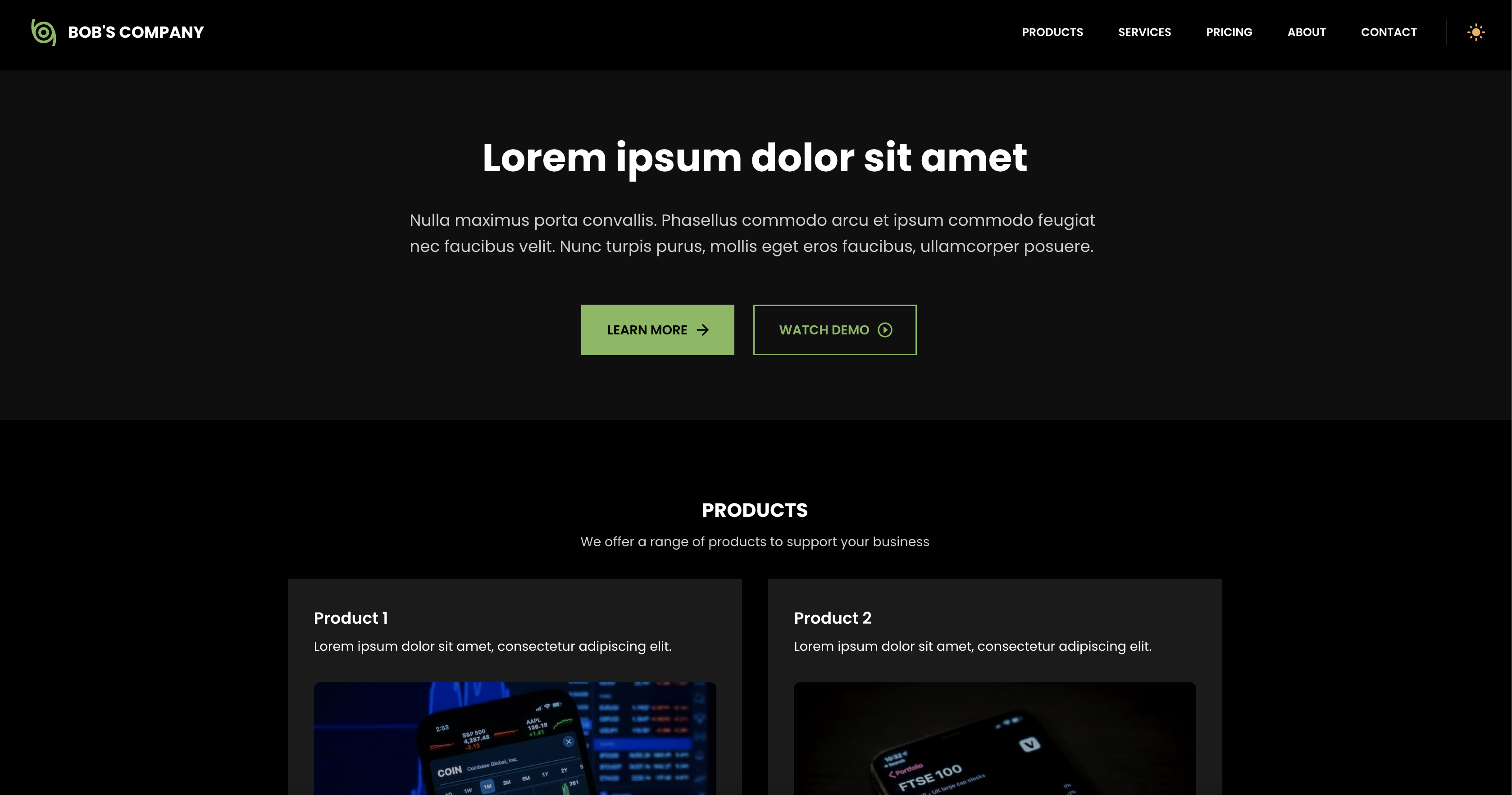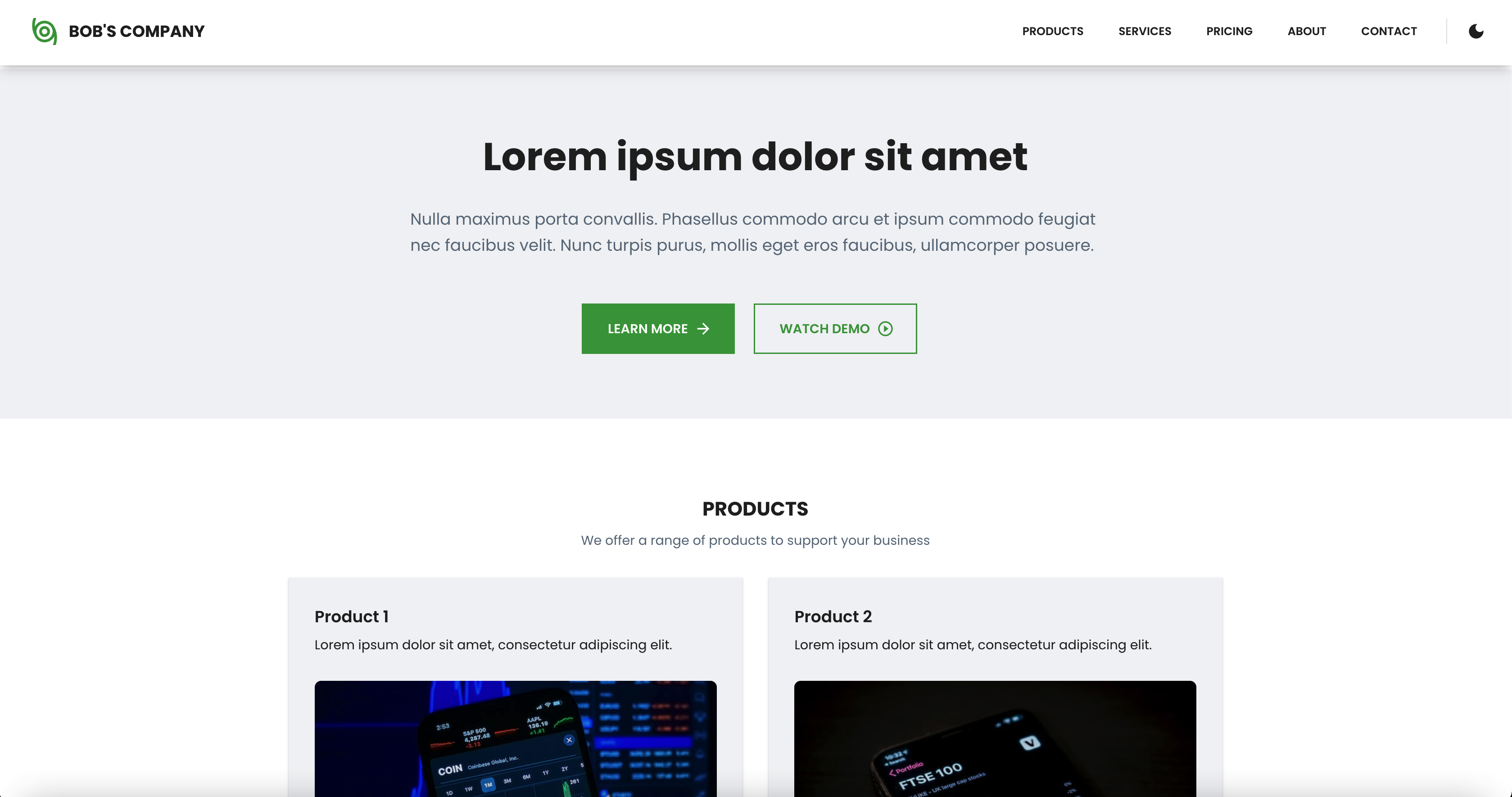business-website-template
 business-website-template copied to clipboard
business-website-template copied to clipboard
A business website template for a company built using React 18 (with TypeScript 4), Material UI 5, Django 4, and Django REST Framework 3.
Business Website Template
This is a business website template for a company built using React 18 (with TypeScript 4), Material UI 5, Django 4, and Django REST Framework 3.
Dark mode:

Light mode:

Table of Contents
- Prerequisites
- Installation
- Running the application
- Running the tests
- Adding data to the application
- Customizing the application
- Copyright and License
Prerequisites
Install the following prerequisites:
- Python 3.8-3.11
This project uses Django v4.2.4. For Django to work, you must install a correct version of Python on your machine. More information here. - Node.js
- Visual Studio Code
Installation
Backend
1. Create a virtual environment
From the root directory, run:
cd backend
python -m venv venv
2. Activate the virtual environment
From the backend directory, run:
On macOS:
source venv/bin/activate
On Windows:
venv\scripts\activate
3. Install required backend dependencies
From the backend directory, run:
pip install -r requirements.txt
4. Run migrations
From the backend directory, run:
python manage.py makemigrations
python manage.py migrate
5. Create an admin user to access the Django Admin interface
From the backend directory, run:
python manage.py createsuperuser
When prompted, enter a username, email, and password.
Frontend
1. Install required frontend dependencies
From the root directory, run:
cd frontend
npm install
Run the application
To run the application, you need to have both the backend and the frontend up and running.
1. Run backend
From the backend directory, run:
python manage.py runserver
2. Run frontend
From the frontend directory, run:
npm start
3. View the application
Go to http://localhost:3000/ to view the application.
Run the tests
1. Run the backend tests
From the backend directory, run:
python manage.py test --pattern="tests.py"
2. Run the frontend tests
From the frontend directory, run:
npm run test
Add data to the application
Add data through Django Admin.
Go to http://127.0.0.1:8000/admin to access the Django Admin interface and sign in using the admin credentials.
Customize the application
This section describes how to customize the application.
Changing Section Titles and Subtitles
1. Products
To modify the title and subtitle of the Products section, make changes in the frontend/src/components/Products.tsx file.
2. Services
To modify the title and subtitle of the Services section, make changes in the frontend/src/components/Services.tsx file.
3. Pricing
To modify the title and subtitle of the Pricing section, make changes in the frontend/src/components/Pricing.tsx file.
4. About
To modify the title and subtitle of the About section, make changes in the frontend/src/components/About.tsx file.
5. Contact
To modify the title and subtitle of the Contact section, make changes in the frontend/src/components/Contact.tsx file.
Changing Colors
To modify the colors in the application, make changes in the frontend/src/theme/palette.ts file.
Changing Fonts
To modify the fonts in the application, first, add a new font to the frontend/public/index.html file, and then make changes in the frontend/src/theme/theme.ts file.
Changing Logo
To modify the logo in the application, make changes in the frontend/src/layout/Header.tsx and frontend/src/layout/Sidebar.tsx files.
Changing Buttons in the Hero Section
To modify the two buttons in the Hero section, make changes in the frontend/src/components/HeroButtons.tsx file.
Copyright and License
Copyright © 2022 Bob's Programming Academy. Code released under the MIT license.